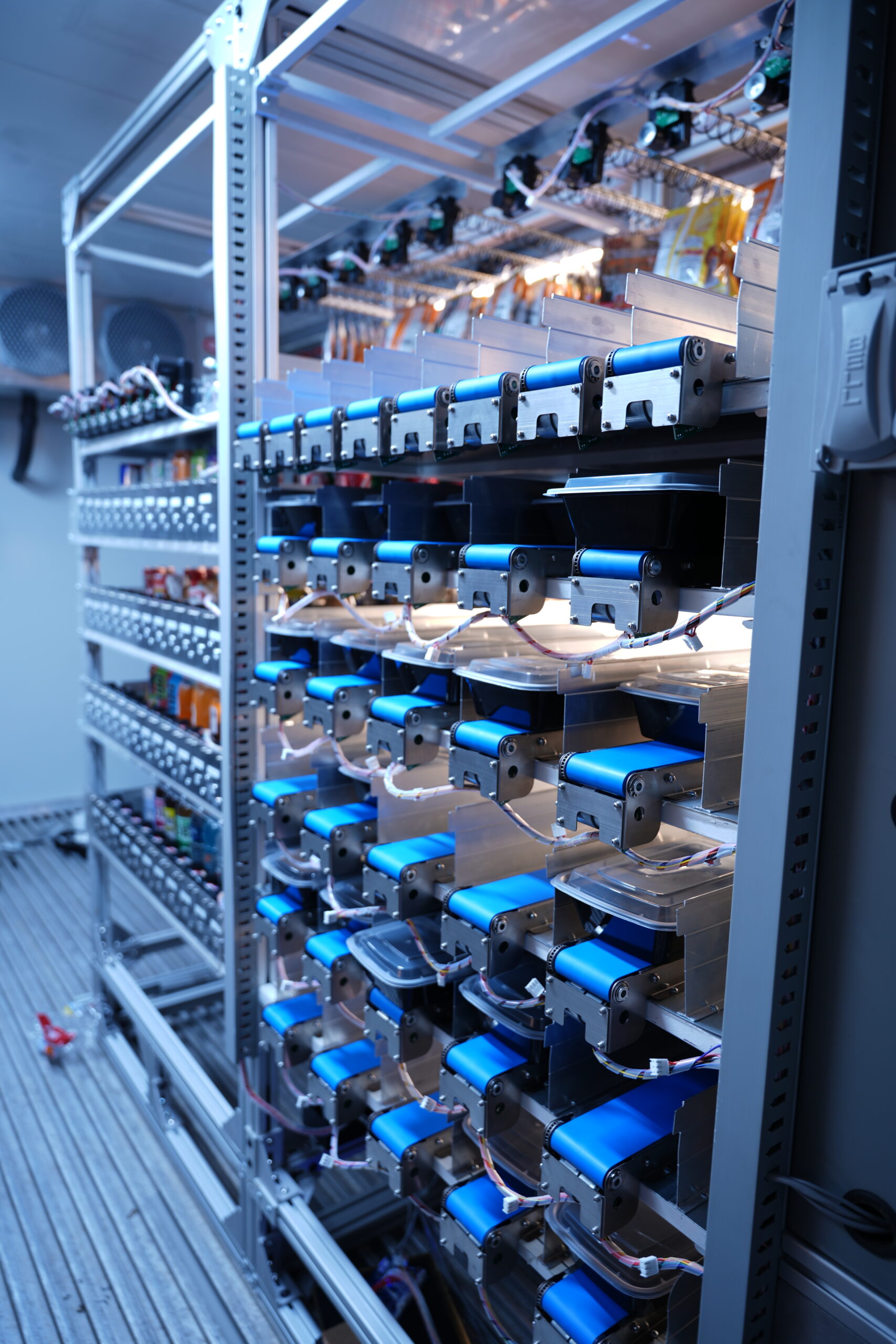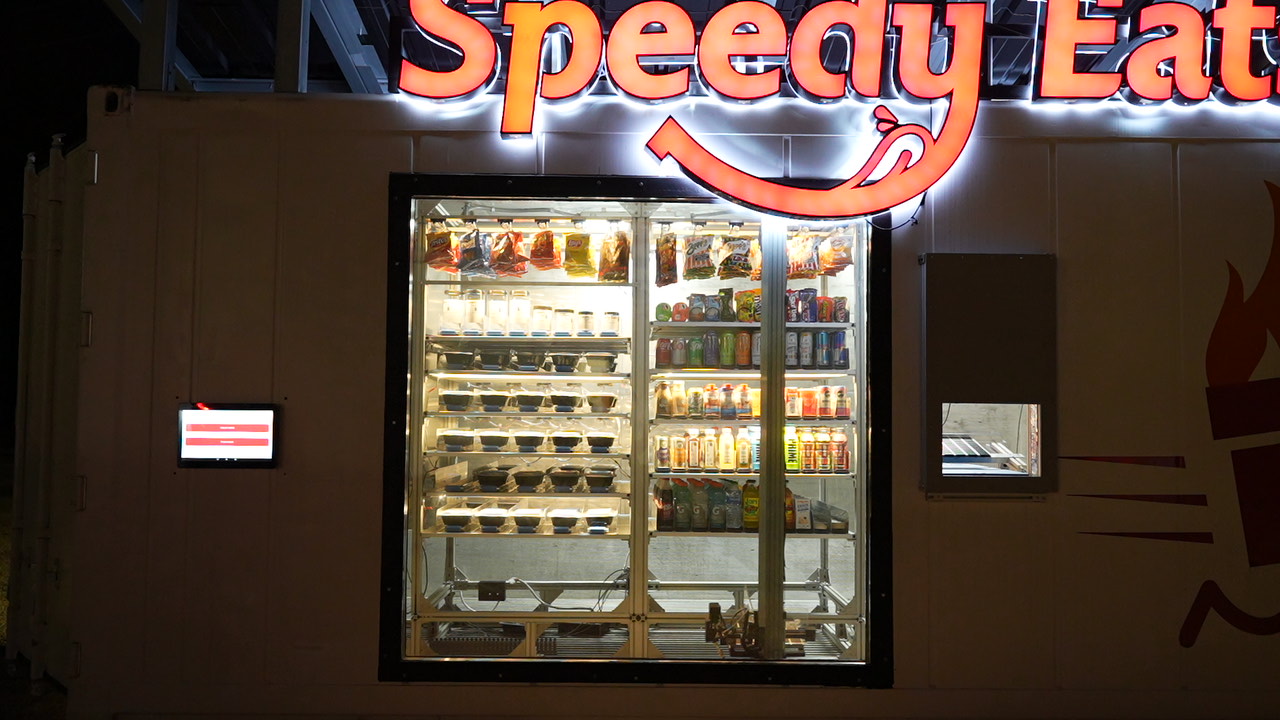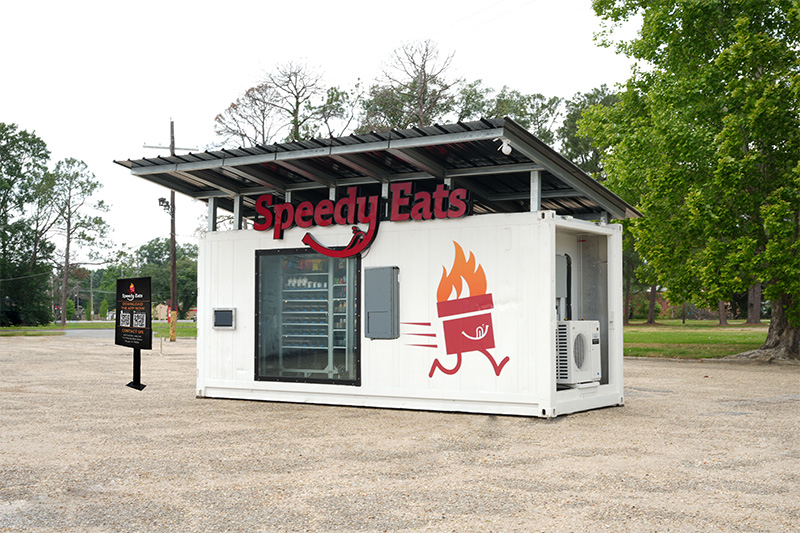Frederic “Speed” Bancroft had such a lousy experience at a fast-food restaurant in 2015 that he decided to design a QSR without a human in it.
“This lady griped at me because I didn’t read a sign on the ordering menu about the credit-card machine being down. I started tooling around in my head how I can improve the customer experience. I went home and built an automated hamburger model,” he said.

Speed Bancroft, CEO of Speedy Eats.
And from that relatable bad-service experience has come something unrelatable: an entirely tech-operated drive-thru, which can stay open 24-7, provide hot or cold meals, for single-serve or planned meal customers, using cashless payment options and a QR code verification system, all without people. That is a long way to go to fill out a customer-complaint card.
What a store gets you
There are different pricing options for different size stores. But for a 20-foot store with 230 shelves, the price of installation is $179,000, with the company taking 7 percent of sales. The service includes a mobile app, dashboards, a cell signal, 75 percent fridge and 25 percent freezer space, custom-built shelving based on inventory, an awning, AC, and electric meter.
“We can handle prepared meals, salads, wraps, cold-cut subs. Those can all be served fairly easily,” Bancroft said. “Our packaging has a degassing valve on it so the pressure can be let out when we microwave it. It’s all locally prepared foods with a heat seal on the container. The food kicks out into a gantry basket, which is part of the microwave. We can do two meals at a time under two minutes. Then the orders will go into a left-to-right swinging pick-up window, which can hold 10 meals at a time.”
 Speedy Eats already has one agreement in hand, for a location in Natchez, just a couple hours from its Baton Rouge headquarters. It is partnering with a PJ’s Coffee franchise operator who has real estate with enviable traffic. Bancroft just needs to trial run the software first.
Speedy Eats already has one agreement in hand, for a location in Natchez, just a couple hours from its Baton Rouge headquarters. It is partnering with a PJ’s Coffee franchise operator who has real estate with enviable traffic. Bancroft just needs to trial run the software first.
“We are going to spend the next two months testing it. Our software connects to a Raspberry Pi inside the store, which feeds information to our PLC. I want to conduct 1,000 end-to-end cycles with zero failure. Then we will turn the keys over to the operator,” Bancroft said.
The concept is filled with whizbang technology and it may be arriving at a time in history when contact-less service makes all the sense in the world. But it’s not obvious where the perfect fit for locations will be.
“We’re trying to figure that ourselves,” Bancroft said.
Meal prep may be the meal ticket
But he sees the positioning clearly. It’s not in the QSR category, but automatic merchandising and meal prep.
“Meal prep is a $17 billion industry and expected to go up to $25 billion in the next five years,” he said. “You might have an operation already where you do meal prep. You might want to go across town or go into an underserved market but you don’t want to staff it with another 10 to 15 people. You can buy our store and it’s a drive-through QSR for you.”
 Third-party delivery is part of the model, although those kinks still need to be worked out. “We’re talking to GrubHub but it’s in a preliminary stage,” he said.
Third-party delivery is part of the model, although those kinks still need to be worked out. “We’re talking to GrubHub but it’s in a preliminary stage,” he said.
Along with testing the software, the company is going to spend the next six to nine months doing business-to-business marketing, with the hope of landing 10 commitments.
Bancroft is also on the lookout for an angel.
“We’re at the point where we want to attract a lead investor,” he said. “I think we have enough critical mass for that.”
As long as the person doesn’t harp on reading signs.


